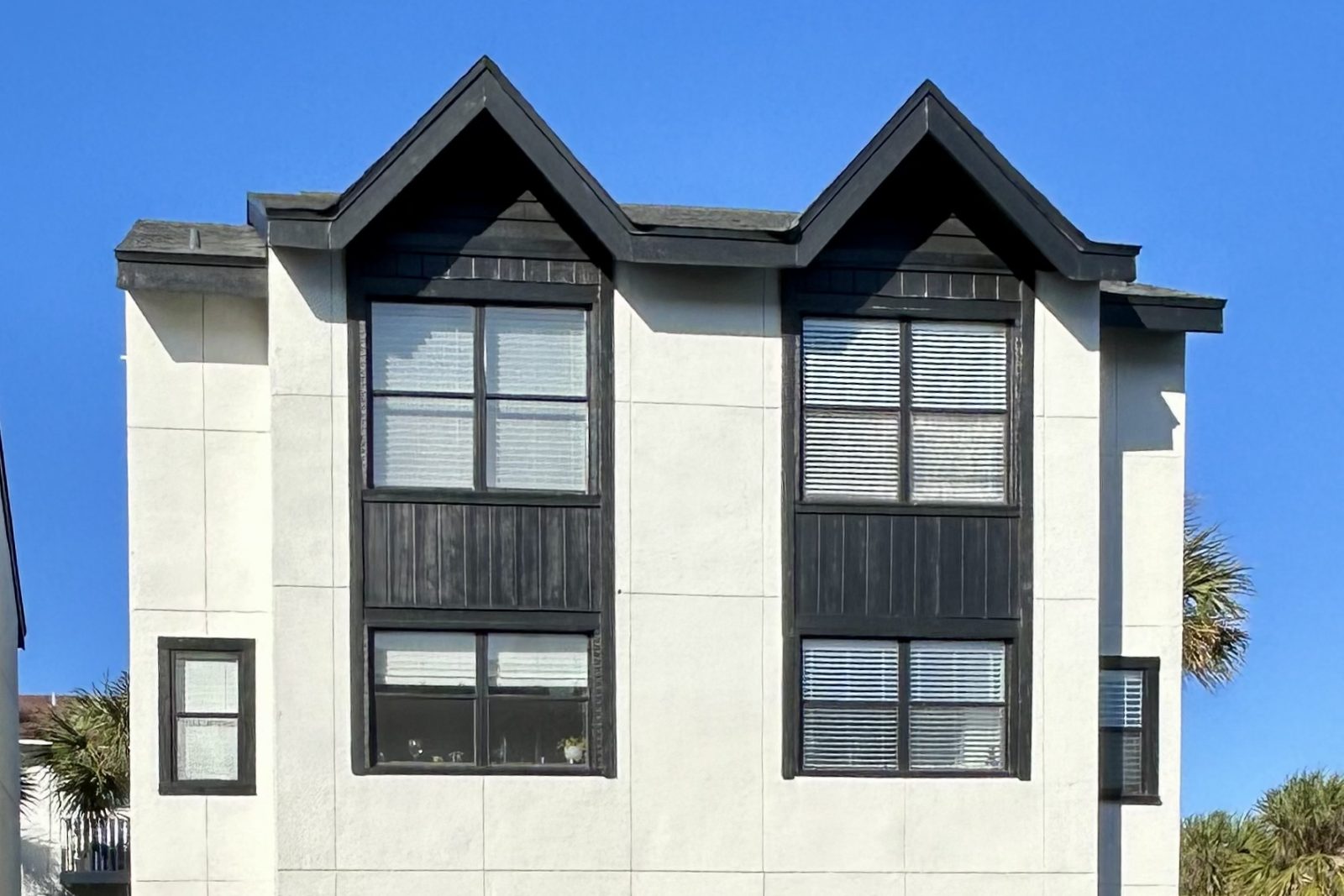I recently talked to a friend who was looking at townhomes at the beach. One popped up on Zillow that caught their eye. It was an older, three-story unit just blocks from the Atlantic Ocean. Sweet. Then they noticed there were no association fees. Did someone make a mistake in the listing? It certainly made the monthly payments less without association dues.
Then came their site visit. The unit for sale had a freshly painted exterior with interior improvements to both the kitchen and baths.
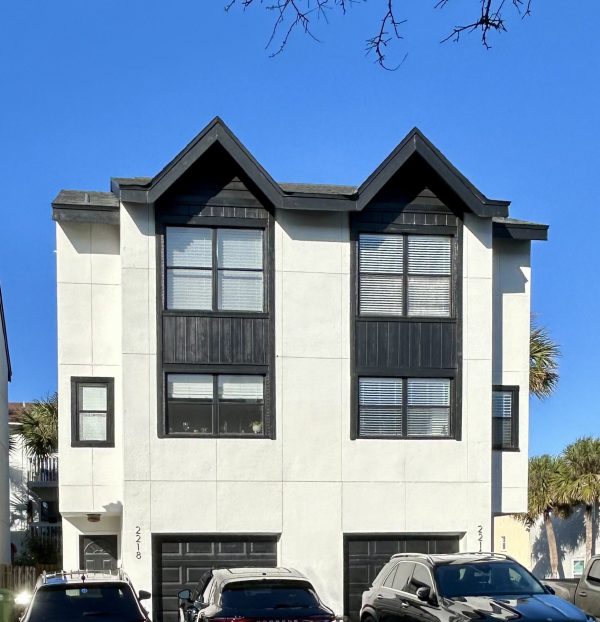
But the view from the kitchen sink was directly to another the unit across the street. Unfortunately, this unit had not been painted or maintained.
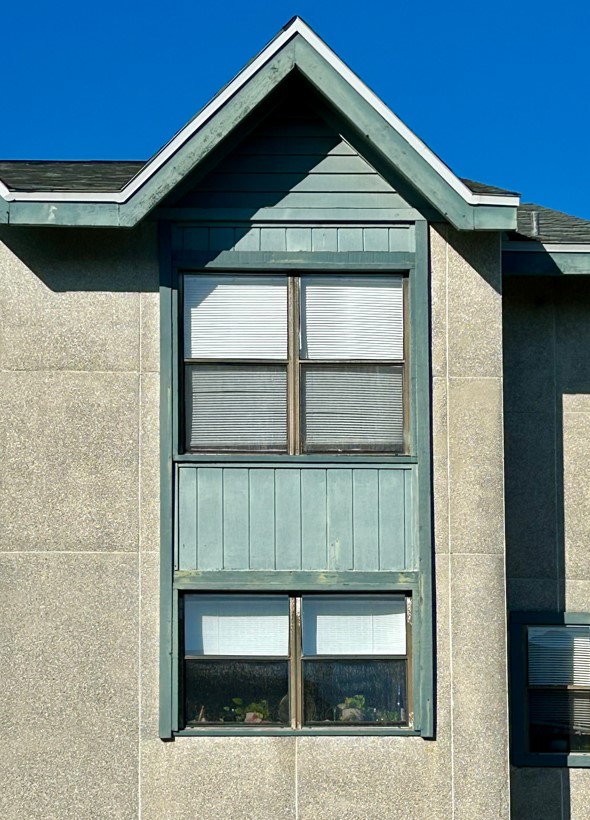
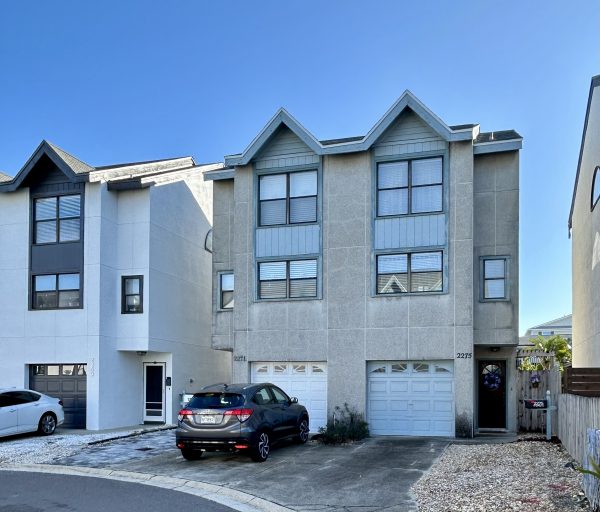
This townhome was a fee simple duplex. It was at the beginning of a cul-de-sac that had nine other buildings clustered around an open green space. Within this small community of 10 buildings were 20 different owners with many different points of view, budgets, and aesthetics. Here are the issues within this small cluster of units.
Exterior Maitenance
The original exterior was coquina stucco with wood accent panels. Coquina is stucco with small seashells embedded in the finish. It was thought to be a very beachy look. But over time, the finish began to discolor. As shells fell away, small indentations appeared – perfect for growing mold and mildew. Pressuring washing this finish meant risking blowing off more shells and creating more issues. Eventually, this finish needs to be painted. In this small cluster, less than half of the buildings have had their stucco painted. The majority of the buildings look tired and dated.
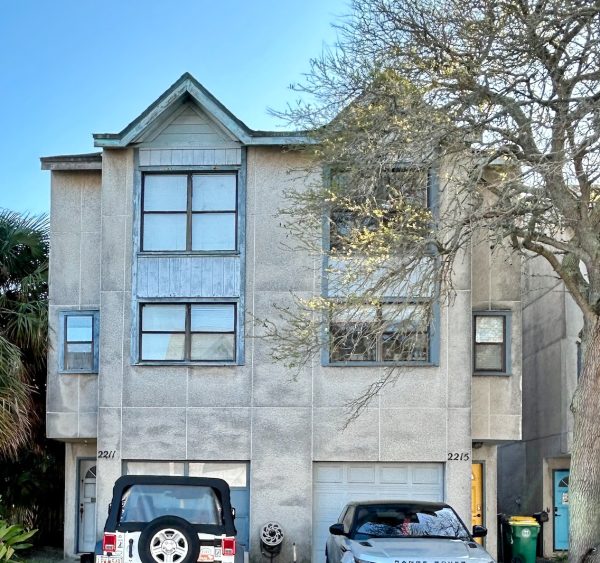
Exterior Color Free-for-all
The wood accent panels also needed to be painted, especially in this harsh beach environment. Some homeowners recognized this need to paint the wood – but not all. Additionally, not everyone painted their wood a cohesive color with their surrounding buildings. Some of the units have chosen a completely different paint color from the adjacent unit in the same building.
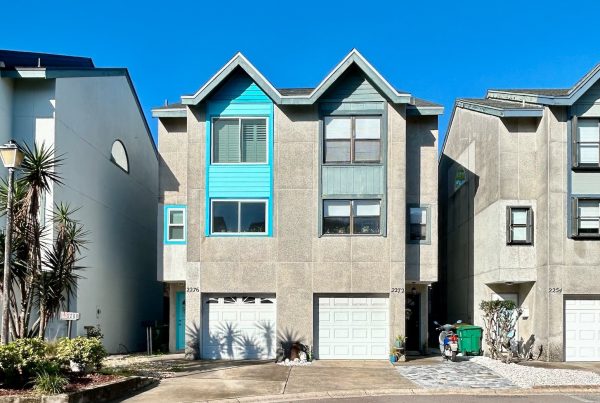
Garage Doors
Of course, over time the garage doors needed replacing. In this instance, each homeowner would select their own personal favorite and in their own budget. So, not only were there different garage doors on each building – some had different garage doors within the same building. Some were solid and some had glass panels. Some glass panels were arched to match – uh – nothing?
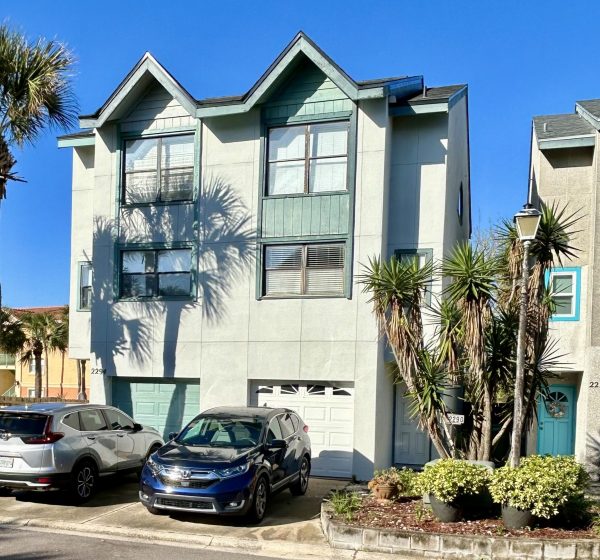
Common Area
These ten buildings are clustered around a small green space. At some point, you might have generously called it a pocket park – an inviting outdoor place to gather.
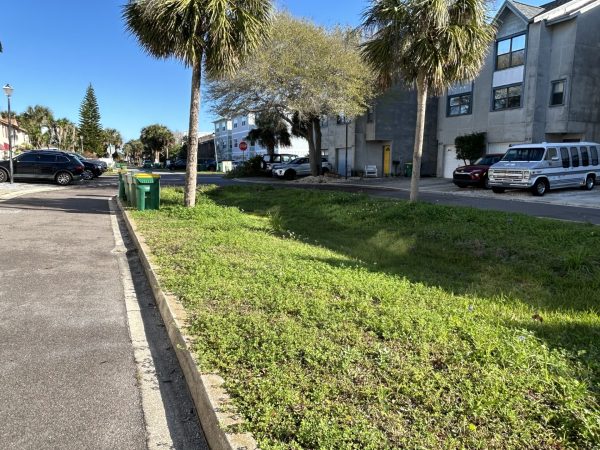
But with no one to maintain or regulate this area, it has become weed filled (probably has snakes too) and only a few palm trees remain. It has become the home of the oversized trash and recycling receptacle which litter the streets seven days of the week. What was once an asset has become an eyesore liability.
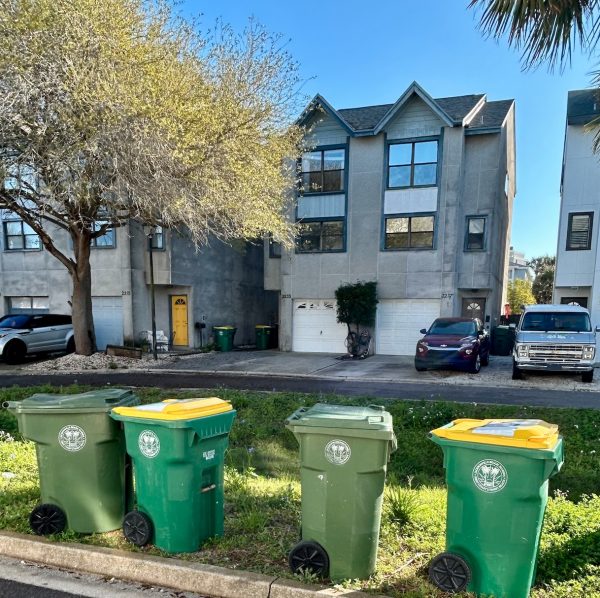
Parking Problems
Our dependence on the automobile is abundantly clear in this community, as there are cars parked everywhere – except perhaps in the garage. Enforcing parking is a never-ending and impossible task, as many households need to park more cars than their residence was designed for. One community prohibits cars to parked in the street overnight. Sounds like a reasonable policy – except who wants to ride around the neighborhood at night ratting out their neighbors? And what happens when the grown “kids” come home from college? Do you really want to be “that guy”?
No One Likes to be “Told”
Let’s face it – no one likes to be told what to do or what not to do with their own home. Who wants to pay monthly dues? Worse, no one likes a fine for not mowing, weeding, painting, pressure washing, or maintaining their home. And no one wants to be on the homeowner’s association board. It is a thankless but necessary job. How about the architectural “expert” who gets to tell future residents their dream home is ugly and disallowed? Yes – I have been in that role, and it was not fun. Ironically, the same residents who were flabbergasted over their denial became the neighborhood maintenance vigilantes once they moved in. Perhaps there is some correlation there…
All’s Good until the Developer Leaves
Builders and developers know the value of a functioning homeowner’s association since they have lots and houses to sell. They often are willing to pay for experts like architects and landscape architects to be on their boards. They recognize the worth of a board and how it helps preserve the value of the neighborhood. But when the developer turns it over to the homeowners – suddenly everyone is an architect. Hopefully, there is a robust rules and regulations in place that can be followed, enforced, and not left to interpretation.
A Necessary Evil
Suffice to say, this community could do with a functioning HOA to save it from itself. For all the time, trouble, and expense, it turns out homeowner associations are a necessary evil. It is evil to be told what to do and evil to be the teller. But in the absence of leadership – all hell breaks out.
Categorized in: Uncategorized
This post was written by Housing Design Matters


